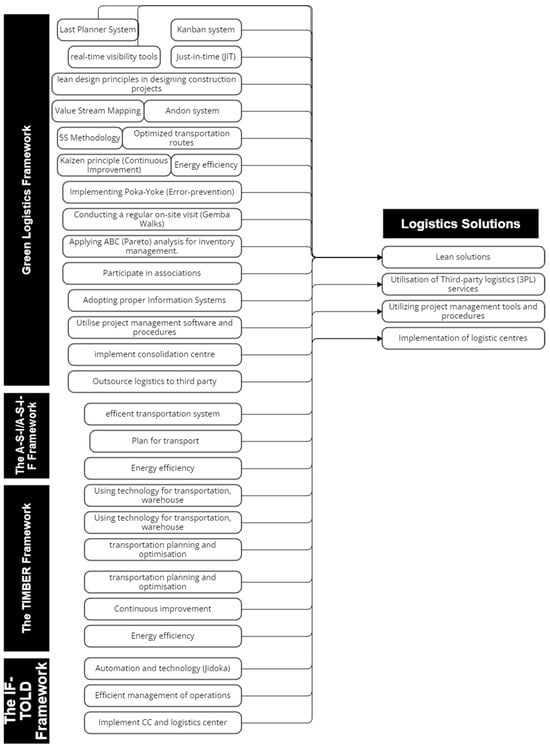The United Nations Environment Programme (UNEP) defines a sustainable economy as one that improves human welfare and social fairness while significantly decreasing environmental hazards and ecological shortages. This type of economy is marked by low carbon output, efficient use of resources, and social inclusion [37]. The Organisation for Economic Co-operation and Development (OECD) Green Growth Report characterises sustainable growth as promoting economic advancement while safeguarding natural resources that supply crucial materials and environmental services [38]. In the realm of construction logistics, sustainability signifies a major shift towards minimising environmental impact, fostering social responsibility, and ensuring economic feasibility [39]. The construction industry has been recognised for its substantial environmental effects, spanning from resource extraction to transportation and waste production [40]. The adoption of eco-friendly practices and cutting-edge technologies has given rise to sustainable construction logistics [41]. To reduce emissions associated with the movement of materials and equipment, green transportation methods, such as electric or hybrid vehicles, should be adopted. Furthermore, employing effective route planning and logistics management systems help enhance delivery schedules and decrease fuel consumption and traffic [38]. Additionally, emphasising sustainable material sourcing and waste reduction contribute to the industry’s overall environmental sustainability [42]. Sustainable construction logistics requires socially responsible practices, including fair labour conditions and community involvement [4]. As sustainability becomes increasingly crucial to stakeholders, the construction industry continues to evolve, advocating for a more environmentally conscious and socially responsible approach to logistics [43]. This ongoing progress not only benefits the environment but aligns with broader global initiatives aimed at achieving sustainable development goals [38]. Grasping key indicators is crucial for tackling sustainability challenges in the construction sector. Commonly, specific metrics are used to assess the success of construction projects [44]. A vital component of sustainable logistics management in construction involves incorporating sustainability goals from various stakeholders, including management, external entities, suppliers, and customers [44]. To achieve sustainability throughout the construction supply chain, it is necessary to fulfil environmental, social, and economic objectives [45]. Product life-cycle analysis is an effective method for evaluating the environmental impact from the design stage through to product or building usage [46]. When choosing construction material suppliers, environmental criteria should align with strategic aims, policies, and regulatory requirements [39]. Construction companies may implement environmental standards for monitoring supplier performance or establish policies for supplier compliance [47]. Studies on sustainable logistics management frequently centre on the triple bottom line framework (environmental, economic, and social pillars) as outlined in the Brundtland Report. The author of [48] conducted a comprehensive review of tools for assessing construction company sustainability based on the triple bottom line pillars, highlighting the importance of understanding relevant indicators for addressing construction sustainability. Table 1 displays the identified pillars and associated indicators derived from various authors’ perspectives.
Source link
Abdulla Subhi Ruzieh www.mdpi.com

